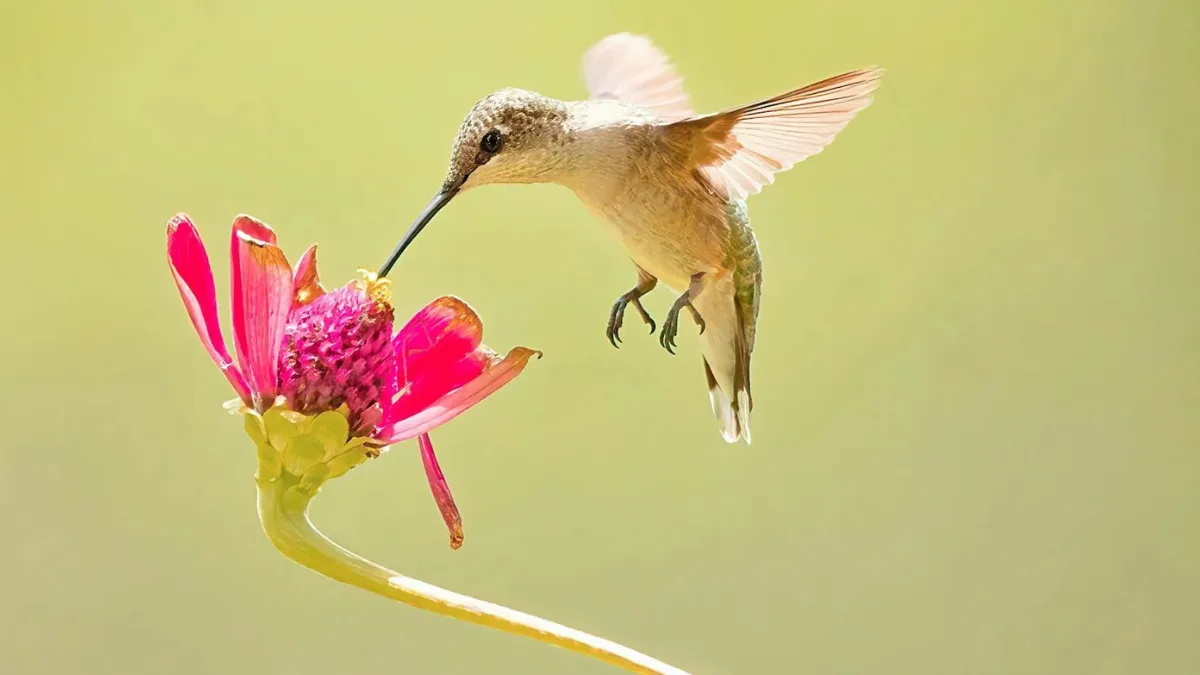Create a Hummingbird Paradise with Native Plants
The single most effective way to attract hummingbirds to your yard is by planting native, nectar-rich flowers that bloom throughout the seasons. Hummingbirds are naturally drawn to bright, tubular flowers in red, pink, orange, and purple. Native plants like Bee Balm, Cardinal Flower, Coral Honeysuckle, and Columbine not only offer ample nectar but also blend well into your local ecosystem, supporting insects and pollinators hummingbirds rely on for protein.
Plant in clusters to create a visual beacon and consider layering flower heights to mimic natural landscapes. Use a mix of perennials and annuals so there’s always something blooming. Avoid using pesticides or herbicides, which can harm both hummingbirds and the insects they eat. The more varied your plant selection, the more hummingbirds will flock to your garden—and stay. If you’re in a drought-prone area, look for nectar plants that are heat-tolerant and low-maintenance, like Salvia and Penstemon.
Install and Maintain Clean Hummingbird Feeders
While natural nectar is ideal, hummingbird feeders provide a reliable energy source, especially during migration. Choose feeders with red accents (not yellow, which attracts bees), and opt for those with ant moats and bee guards. Use a simple nectar recipe: 4 parts water to 1 part white granulated sugar, boiled and cooled. Never use honey, artificial sweeteners, or red dye—they’re harmful to hummingbirds. Hang feeders in shaded areas to slow fermentation and clean them every 3–4 days (daily in hot weather).
Bacteria and mold can sicken or kill hummingbirds, so regular maintenance is crucial. Place multiple feeders around your yard to reduce territorial aggression. You’ll quickly notice that some hummingbirds will take ownership of a feeder and defend it. Multiple locations ensure more birds can feed in peace. Rotate feeder positions occasionally to mimic the changing availability of wild nectar sources.
Provide Water for Bathing and Drinking
Although hummingbirds get most of their hydration from nectar, they still need fresh water for bathing. Traditional birdbaths are too deep for these tiny birds, so install a mister, dripper, or shallow fountain. Hummingbirds love flying through mist or perching on trickling water features. These options keep water moving, which helps prevent mosquitoes and algae buildup while also catching the attention of birds in flight.
Position water sources near flowering plants and feeders to create a hummingbird-friendly zone. Adding smooth pebbles or rocks allows the birds to perch safely while they bathe. In dry or hot climates, keeping a consistent water source is essential for their survival and will keep them returning to your yard. Not only does water help them stay clean and cool, but it also enhances their feathers and keeps them agile for fast, efficient flying.
Create Safe Nesting and Resting Habitats
A successful hummingbird garden goes beyond feeding—it also provides shelter and nesting areas. While hummingbirds won’t use birdhouses, they do nest in small trees, dense shrubs, and even on strings of outdoor lights. Provide native shrubs like holly, azalea, or spicebush, which offer both protection and nearby food sources. Avoid heavy pruning during nesting season (spring through early summer), and don’t disturb suspected nesting spots.
Female hummingbirds build tiny, walnut-sized nests from moss, lichen, and spider silk, so avoid removing these materials from your yard. Place perches like thin branches or trellises near feeding stations, so they can rest and keep an eye on their territory. Keep cats and other predators indoors or fenced away from these areas. By offering a safe and supportive habitat, you’ll encourage not just visits—but long-term residence from hummingbird families.
FAQs
Q1: What month do hummingbirds typically arrive?
A: In the U.S., most hummingbirds migrate north in early spring (March to May), depending on your region. Putting out feeders in late March or early April ensures early arrivals have food.
Q2: What should I avoid to protect hummingbirds?
A: Avoid pesticides, herbicides, red food dye in nectar, and deep birdbaths. These can be toxic or unsuitable for hummingbirds.
Q3: Can I plant flowers and use feeders at the same time?
A: Yes! Using both maximizes your yard’s appeal and supports hummingbirds during different life stages and migration patterns.
Q4: Why do hummingbirds fight at my feeders?
A: Hummingbirds are territorial, especially males. To reduce fighting, space feeders several feet apart and hide them from one another’s view.
Conclusion
Attracting hummingbirds to your yard is about creating a space where they can feed, rest, bathe, and nest safely. By planting native flowers, maintaining clean feeders, providing fresh water, and ensuring protective shelter, your yard can become a true hummingbird haven. These small but mighty birds bring vibrant energy and natural beauty to any outdoor space. With thoughtful planning and care, you can enjoy their aerial acrobatics and delightful presence all season long. Start small, stay consistent, and soon you’ll have a yard humming with life.

